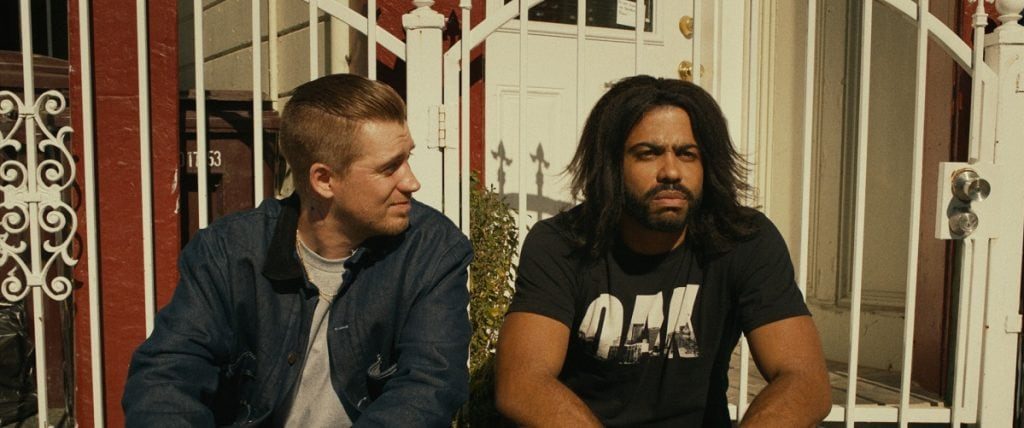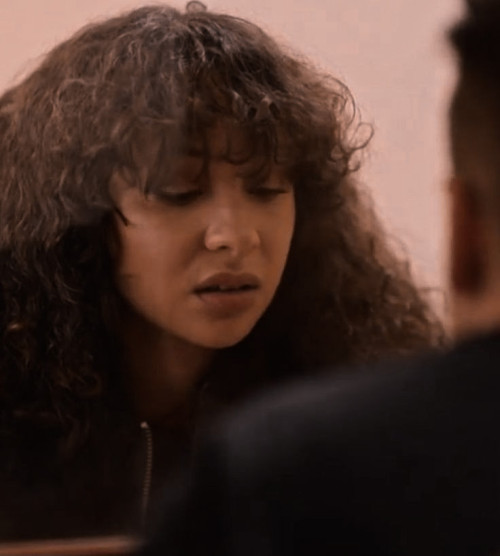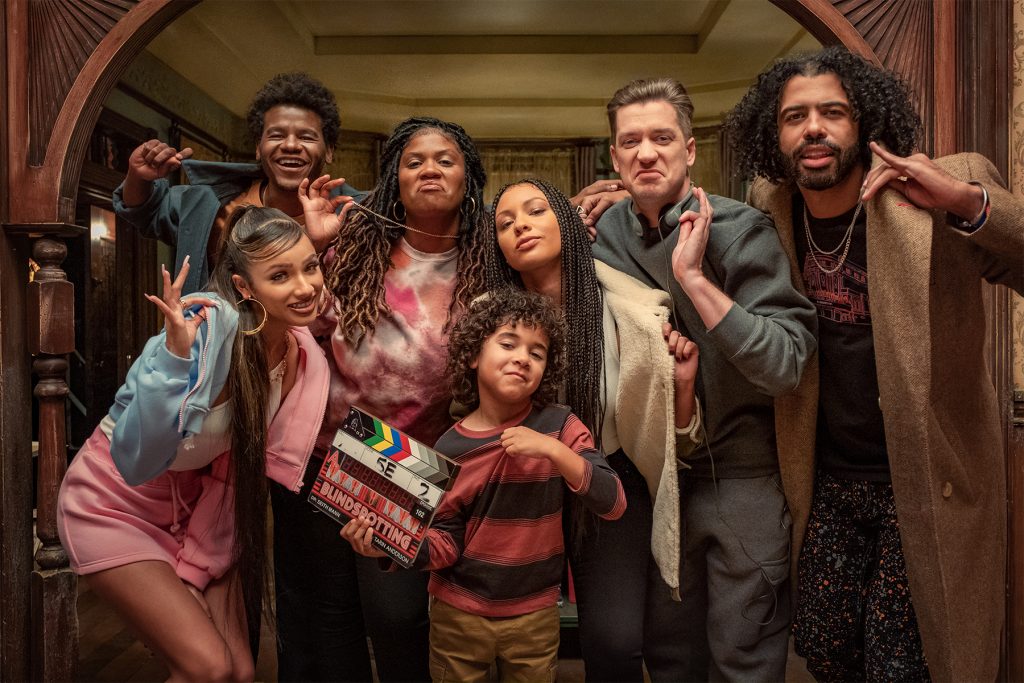Over a decade ago, two writers from Oakland had an idea to make a film depicting their hometown as the centerpiece. It premiered at Sundance in 2018 to high praise. In 2021, it was adapted into an eight-part television series. Filmmakers Rafael Casal and Daveed Diggs spoke to Creative Screenwriting Magazine about bringing their idea to the small screen. We started by asking the duo about the spark behind Blindspotting.
“We first wanted to make a movie about Oscar Grant, a black man who was shot by police on New Year’s Day in 2009,” said Diggs. The death caused by an Oakland transit police office spawned a massive outcry over how communities should be policed and how police should be policed. Diggs and Casal didn’t want to explicitly make a social cause film, but rather, explore their neighborhood at large based on the people they knew and the stories they told. “We honed into a particular side of the [San Francisco] Bay Area to represent,” Diggs continued.
When long time school buddies Diggs and Casal had the opportunity to make a television version of Blindspotting, they wanted to tilt their attention toward the issue of prison reform as opposed to police violence. Ashley Jones (Jasmine Cephas Jones) was the perfect character to tell this story. “It allowed us to see a side to her that we didn’t get to see in the film.” This shift in focus also allowed them to introduce a variety of exciting new characters to the TV series. “We wanted to tell a story that was home grown, important, and relatable,” added Diggs. It allowed them to explore the topical issues surrounding a family member or friend who’s in prison in an entertaining way.
Miles Jones (Rafael Casal) spends most of the season in prison after being abruptly incarcerated in the first episode. Despite never leaving prison, they mined Miles’ character over the course of the season mainly through family visits.
“There are three different Mileses in the show,” quipped Casal. “There’s a different Miles when he’s out with Colin (Daveed Diggs), a different Miles when he’s at home when his son Sean (Atticus Woodward) isn’t around, and a third Miles when he’s behind bars.” These various environments allow the audience to experience the full range of Miles’ character.

Miles (Rafael Casal) & Daveed Diggs (Colin)
“The fun of the show is subverting people’s expectations of what kind of a person he is. We also deny the audience’s full understanding of Miles’ reality in prison by only seeing it through the perspective of the Ashley and Sean.” The deliberate omission of too many scenes of Miles’ prison life forces the family to guess what his life might be like. This mirrors the experience of real life families who have one of their own imprisoned.
The San Francisco Bay Area is a colorful and diverse place with so many perspectives. Casal and Diggs only sought to capture a sliver of that. “There are a thousand ways to look at Oakland in terms of your context and your relationship to it,” Casal mused.
Developing the show began by using recognizable characters and the situations they may find themselves in. “We based the characters on people that we know, ground them, and expand them into television characters,” added Diggs. Using the best-buddy tropes seen in traditional TV sitcoms was a starting point for their [Miles and Colin] relationship. “We don’t subjugate them to these best friend dynamics. We complicated them by making them aware of their blindspots and flaws. We challenged our own assumptions about each character.”
They also asked themselves what side of a characters had they not seen before as the planned future episodes. “We can get too comfortable,” warned Casal. “If we decide that Ashley is quiet and observant, we throw that assumption for a loop because she may have been different in the past. We’re our past and future selves while being our present selves.”
We enjoy the dualities and complexities of each character
Prison Life
Daveed Diggs and Rafael Casal never set out to write a cause TV show about incarceration to influence public perception and policy. “We explored the way the United States deals with the concept of guilt, justice and punishment. These stories bleed into the show rather than us deciding what we want to say about the subject,” said Casal.
The first season of Blindspotting ends with Miles and Ashley getting married one month into his five year sentence. He has a long way to go. “We wanted to explore what it’s like for families when someone is gone for a long time,” Casal added. “What does visitation look like or how does it affect Sean? These are entry level issues that most shows ignore.”

Ashley (Jasmine Cephas Jones)
“These are the human, grounded, painful moments that we should watch people negotiate. How do you tell a child that dad is going away for a long time? How do you discuss guilt or innocence? What are their reactions?” Casal believed that these lived in experiences are rich for great storytelling.
Both Diggs and Casal argue that many TV shows about incarceration are more philosophical in their nature rather than asking how families are affected financially or psychologically, or whether prisons fulfill their rehabilitation functions. “There is restorative justice and punitive justice,” asserted Diggs. Does the justice system appreciate the differences or do they reactively throw everyone in prison and hope for the best?
“If anything, we want the audience to question why we’ve allowed our country to go down this route of incarceration without necessarily making us safer,” concluded Casal.
Funny Moments
Blindspotting is peppered with a curious dash of both darkly comedic and laugh out loud moments to punctuate the drama. “We described the film as a comedy that wouldn’t let it be one and the television series as a sitcom that’s haunted,” declared Diggs.
The comedy in Blindspotting is organic to the characters. They are neither victims of their situation nor are they sad. “They don’t want to be in a drama,” said Diggs. “These characters are optimistic and trying as best as they can to be happy.”
By all means, the comedy acts as a release valve to the dramatic tension. The characters are also smart and can purposefully observe their lives. They have dreams, aspirations, and plans. “Life is funny, stupid and weird. The moments of observation freed up a lot of comedy.”
One of the more unique aspects of Blindspotting is its use of dance – both to illustrate kinetic scenes like moving boxes or working at the docks to full-blown dancing in the street interludes. “We wanted the dance to remind you of the levity of life and also deepen your understanding of the emotional weight of moment,” said Casal.
The authentic Bay Area dance styles were infused into the narrative structure of the show. “Dance was used when we needed to say something without words or to remind the audience of the magic of Oakland. Things are heightened or more than what they seem with this type of storytelling.”
Earlier in the season, the dance is more literal to the storyline. As the series progressed, movement is increasingly attached to the emotional journeys of the characters. “We articulated Miles and Sean growing up without fathers and being raised by Rainey (Helen Hunt) all without dialogue,” continued Casal. It’s a unique artistic expression of using dance in relation to character.
